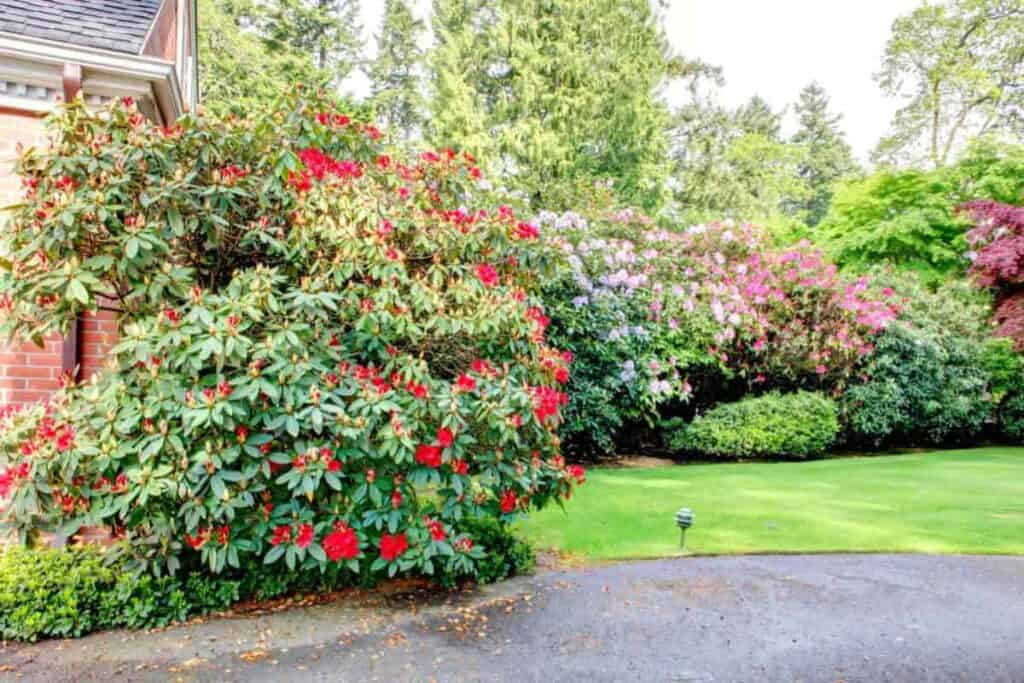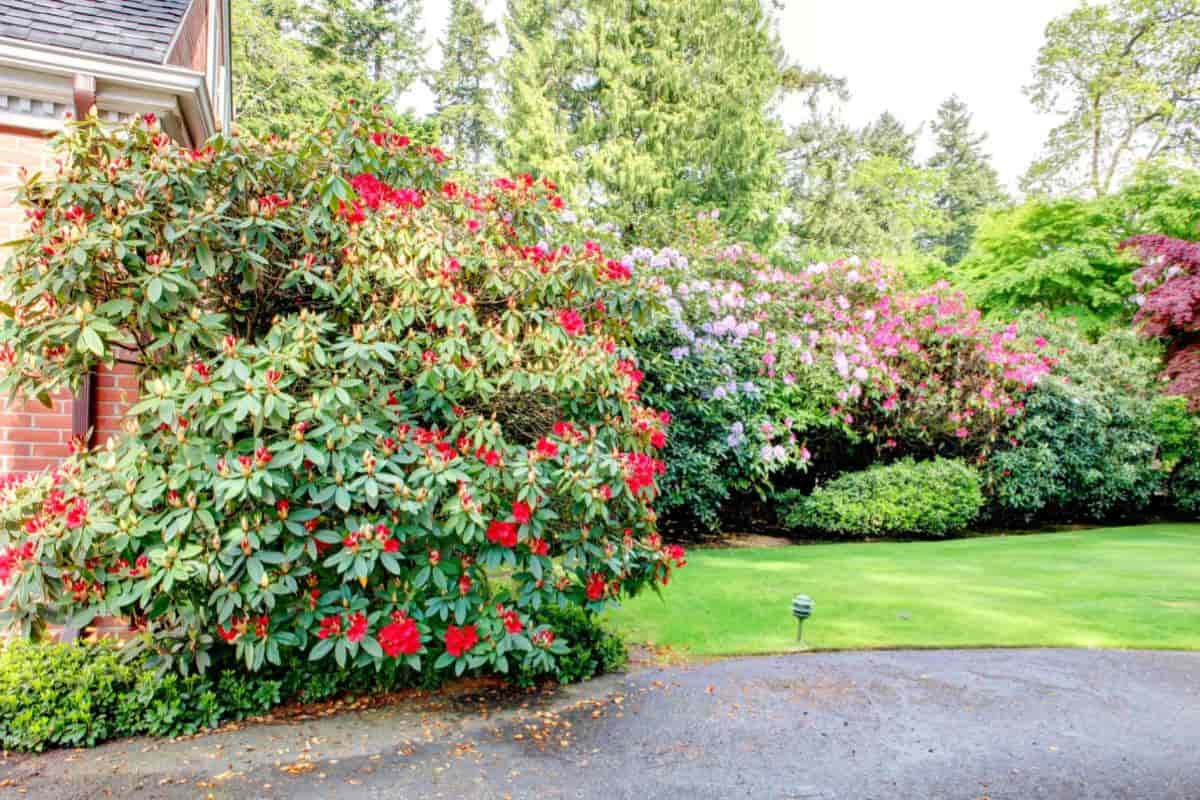For gardening purposes, azaleas are classed apart from rhododendrons.
Horticulturally, azaleas are a series of rhododendrons characterized by the fall leaf dropping of many of its members and fewer stamens (usually five) than other rhododendrons.

Distinctive and beautiful azaleas are so widely propagated that any interested gardener can have azaleas blooming in his garden from early spring till the closing days of June.
Double Azaleas
Hand in hand with the heralding forsythia comes Azalea mucronulatum, bearing single lavender flowers.
A.yodogawa blooms with the largest double flowers of any hardy species—making a spectacular light purple mass in the garden and in arrangements.
Joseph Gable, an American hybridizer, has developed two lovely doubles:
- Rosebud, a pink whose name indicates its appearance, and
- Louise Gable is also pink but a more open double.
Late blooming, camellia-flowered Azalea balsaminaeflora is a low-growing shrub, and so should go in the front of a planting. Its orange-salmon flowers with rosebud centers and overlapping petals close to the azalea season.
Group Of Deciduous Azaleas
A group of deciduous azaleas, hybridized largely from Azalea calendulaceum and other American species, reaches perfection in the Exbury strain.
Though available in this country at a reasonable price, they are too new to be widely distributed.
The flowers, up to 3” inches in diameter, some with frilled edges, are borne on large trusses. All were selected for their pure, clear colors.
The Ironclads
Turning to the other rhododendrons, let’s talk first about the backbone of the collection—the ironclads.
As their name implies, these are hardy, necessary attributes when you think back to the past winter.
The named varieties in this group have fine flowers and good plant habits as well. There are several popular reds (a nurseryman once said to me:
“I can sell any rhodo as long as it’s red!”
The best being the following:
- Caractacus
- Charles Dickens
- Atrosanguineum
- Lord Roberts
- E. S. Rand
- America
- Dr. Dresselhuys
- Charles Bagley
- Giganteum
Catawbiense Album
Heading the list of whites is Catawbiense Album.
- Roseum Elegans – A pink you’ll want, but be sure to ask for the pink or English form, or you may end up with pale, washed-out, blue-tinged flowers.
- Fastuosum Flore-Pleno – A good lavender, and incidentally the only double-flowered rhodo other than the azaleas.
Now beginning to come on the market, which has large flower trusses, and in selected forms, good colors:
- Lee’s Dark Purple
- Hardy Dexter hybrids
Hardy Varieties
- Rhododendron carolinianum – A worthwhile native American species and has small trusses but makes up for them in quantity, covering itself with blooms.
Despite weather vagaries, a little protection against drying sun and wind should make it possible to grow and enjoy even the less hardy varieties.
- Loderi King George – You should try this. Each flower in its truss reaches 5 inches in diameter and looks like a white Easter lily.
Glow with colors unknown to the ironclads includes:
- Goldsworth Yellow
- Goldsworth Orange
Striking Sappho has black markings at the base of each floret, the whole truss resembling a spray of orchids.
Purple Splendor is aptly named. Bell-shaped, waxy pink flowers and oval, heart-shaped leaves are found in the variety Temple Belle and the similar Bow Bells.
Sweet Simplicity – I would not be without white, pink-edged, or white, cherry-edged Louis Pasteur.
Striking Jean Marie Montague – this interests me too. Its leaves stand out perpendicular to the stem instead of drooping as so many do, leaving no exposed stems.
Extraordinary Rosa Mundi
Extraordinary Rosa Mundi, the first rhododendron (not counting azaleas) to bloom, grows flat as a table—leaves and flowers all on one level. Low-growing and very floriferous, it makes a spectacular display.
The temptation to go on listing the many lovely rhododendrons is strong, but it might be better if I end this piece with a few planting pointers.
Acid Soil For Planting
Properly planted rhododendrons require very little care — hardly any fertilizing or spraying.
Of course, they must have acid soil, but most topsoil in this country — with a little fixing—is satisfactory, so that is no great problem.
Heavy Clay Soil
Heavy clay soil should be made porous by adding sand. Don’t make the mistake of adding so much peat moss or leaf mold that the roots dry out in the fluffy soil.
Another important “don’t” has to do with soil touching the trunk as the new plant settles. This could kill your rhododendron within two or three years.
Rearranging Your Garden
If you get the urge to rearrange your garden no need to worry about the Rhodos. Even large plants have small, compact balls of roots, making them easy to move.
However, don’t try it in the late spring or early summer when they are nursing tender young leaf growth.
Rhododendrons vary in ultimate height from 6” inches to 20 feet—a good thing to check on when you plan your garden.
Although they will stand drastic pruning, you can never bring a 20-footer down enough to make the 6” inches you planted behind it visible.
44659 by Dr. David Gurin
